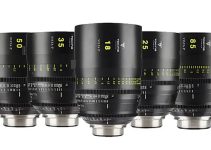There was a time when motion tracking in Premiere Pro was completely inapplicable simply because it was non-existent. If you wanted to track an object by attaching it to a subject in the old days, whether it be to blur someone’s face or have text move along with someone running, you had to send your clips to After Effects.
While the suggested workflow is rather straightforward, it can quickly become time-consuming and even take a toll on your timeline performance. Fortunately, Adobe has already addressed this issue with the introduction of auto motion tracking for masks in Premiere Pro CC. Nevertheless, if you want to track anything that doesn’t use a mask, there’s still no way to do it automatically.
Thankfully, Nathaniel Todson has created a tutorial that shows how to manually track objects inside of Premiere Pro, as well as how to get the most out of the auto-tracking feature for layers when using a mask.
For the manual tracking, the first thing you have to do is import the object you want to attach to your subject. The graphics could be a text layer, a shape, image, 3D animation, so on and so forth. Whatever the case, make sure that the play head is at the start of your timeline. Then select the object that you want to be tracked and under the Position properties, click on the small stopwatch icon. This step will create a keyframe for the position of the tracked object.
Next, find a point in your footage where the newly added element to be anchored to the subject. This will be the point of reference as you should manually adjust the position of the tracked object afterward. Examples of reference points for tracking could include a rock on the ground, an exterior mirror of a moving vehicle, someone’s face, etc.
Now, move one frame forward in the timeline. You’ll see that the object has changed its position and it’s out of place. Adjust the setting so that the visual element is back at the reference point you set earlier. Continue the process going frame by frame to ensure an accurate tracking. This workflow will take some time depending on how complicated or long the shot is.
Optionally, if you are planning to use a mask that needs to be tracked (i.e., blurring someone’s face), Premiere Pro CC actually does provide the ability to track the subject for you as shown in the video above.
The first step is to create an adjustment layer and set right its duration in the timeline so that it spans the length of your clip. Next, add the mosaic effect to the adjustment layer. Tweak the Horizontal and Vertical Blocks of the filter to count to 100. Then create an elliptical (circular) mask by clicking the circle icon which can be found at the very top of the Mosaic effect properties. Adjust the mask so that it covers the subject you’re trying to follow.
Finally, by ensuring that your play head is set to the beginning of the adjustment layer, click on the “Play” button located in the Mask Path property. Premiere Pro will begin to automatically track the subject in your footage so that in the end both elements to be in perfect sync.
If at any point the motion tracking did not work as planned (object doesn’t fully cover the subject), you can go back and manually adjust the position of the mask. This workaround will not only save you a ton of time and effort but will also eliminate the necessity of sending your project to After Effects to pull off this otherwise relatively simple compositing task.
[source: tutvid ]
Disclaimer: As an Amazon Associate partner and participant in B&H and Adorama Affiliate programmes, we earn a small comission from each purchase made through the affiliate links listed above at no additional cost to you.
Claim your copy of DAVINCI RESOLVE - SIMPLIFIED COURSE with 50% off! Get Instant Access!




